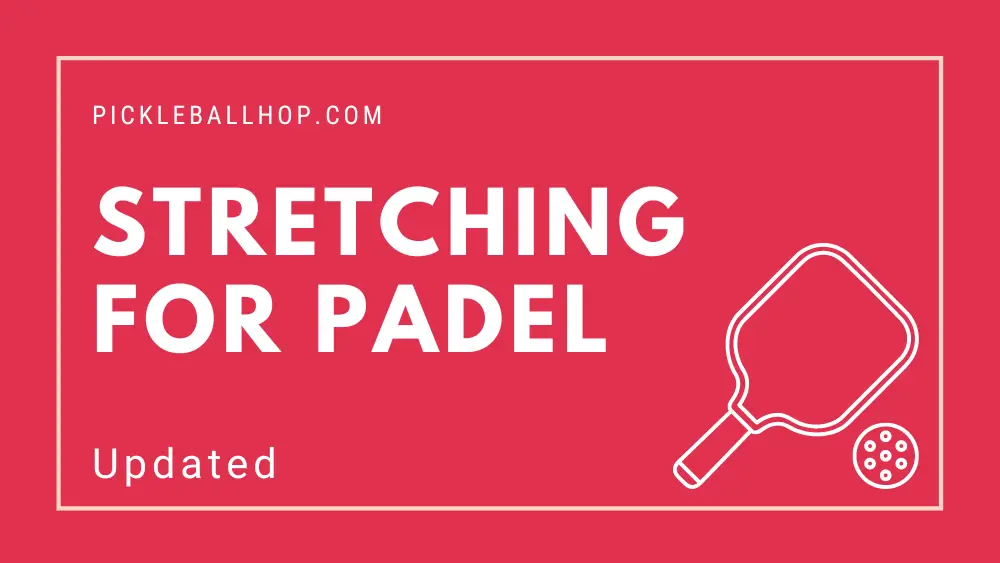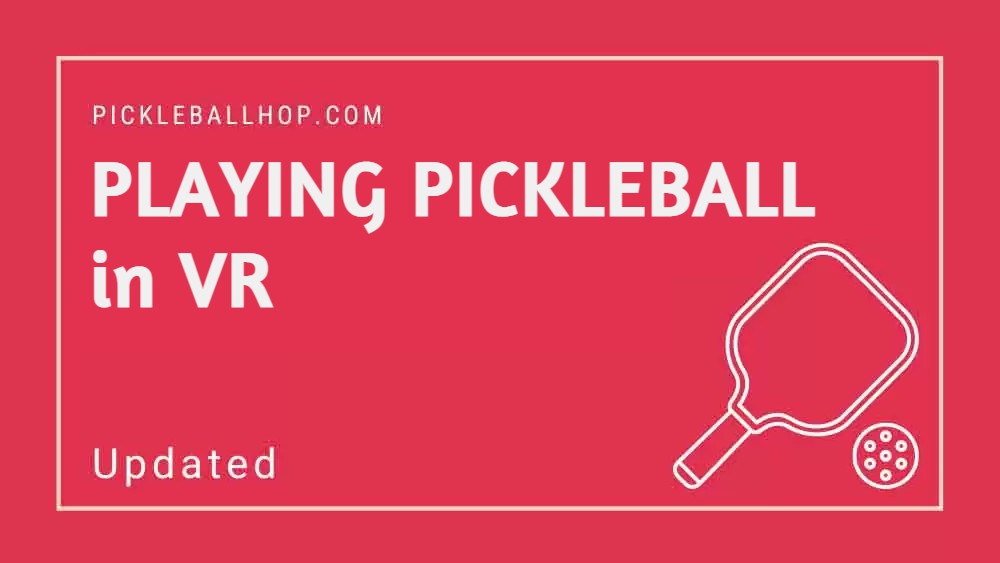Few shots in pickleball are as satisfying as a sharp punch volley that lands right in front of an opponent’s feet, resulting in the opponent’s pop up being weak, and you or your partner being able to put it away. In pickleball, different volleys are used under different circumstances, so to win, you need to know which volley to use in different situations.
What is a Volley?
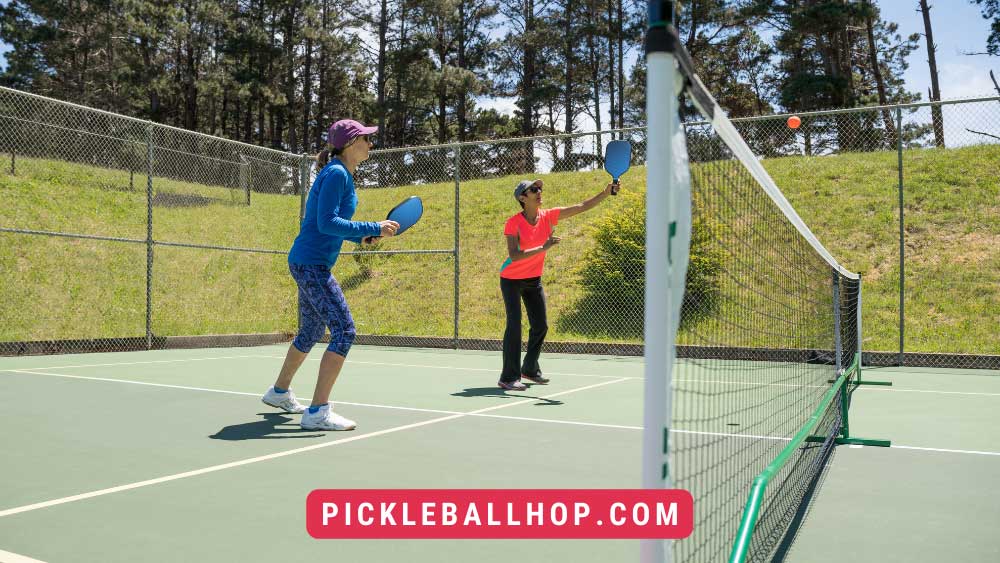 In pickleball, a volley is simply a shot from the air before the ball bounces. As you make your way from the baseline to the non-volley line, you often execute volleyballs at or near the non-volley line – or even in the transition area.
In pickleball, a volley is simply a shot from the air before the ball bounces. As you make your way from the baseline to the non-volley line, you often execute volleyballs at or near the non-volley line – or even in the transition area.
Official Pickleball Rules of Volley & Non-Volley Zone
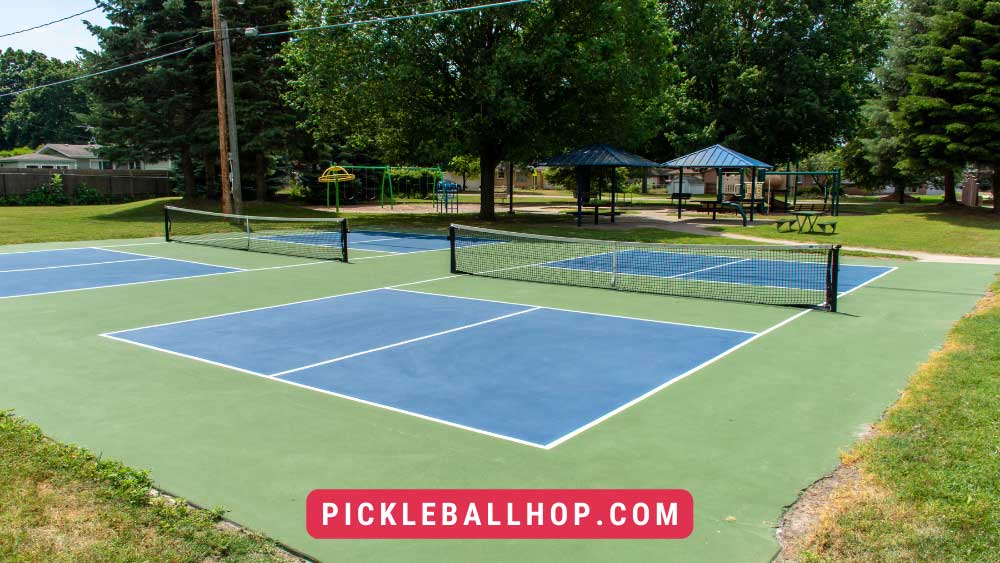 When striking a ball out of the air with both feet, the official pickleball rules clearly indicate that they must be behind the non-volley line. Furthermore, you cannot get dragged into the kitchen (non-volley zone) by the momentum from volleying the ball.
When striking a ball out of the air with both feet, the official pickleball rules clearly indicate that they must be behind the non-volley line. Furthermore, you cannot get dragged into the kitchen (non-volley zone) by the momentum from volleying the ball.
The kitchen line is ready as you hit the volleyball
The “ready position” and preparation for whatever type of volley you are about to hit have some commonalities.
- Feet shoulder-width apart (maybe a little more)
- Your chest should be facing the net (shoulders squarely facing it)
- Slightly bent knees
- Weight on the balls of your feet
- Position the paddle in front of your body and up
When it comes to paddle position, different people have varying opinions regarding exactly where the paddle should be positioned.
Paddles that are straight out and on edge are sometimes called a “neutral” position. The default paddle position for some is a complete backhand, parallel to the ground. Some prefer something in the middle though. Whichever is most comfortable for you is what you should use.
Volleyball Grip When Hitting
A single grip is preferred for volleys, where the non-volley line needs to react and switch grips rapidly – leaving little time to react or change grips. Most players prefer the continental grip when volleying.
How Should I Hit My Volleys?
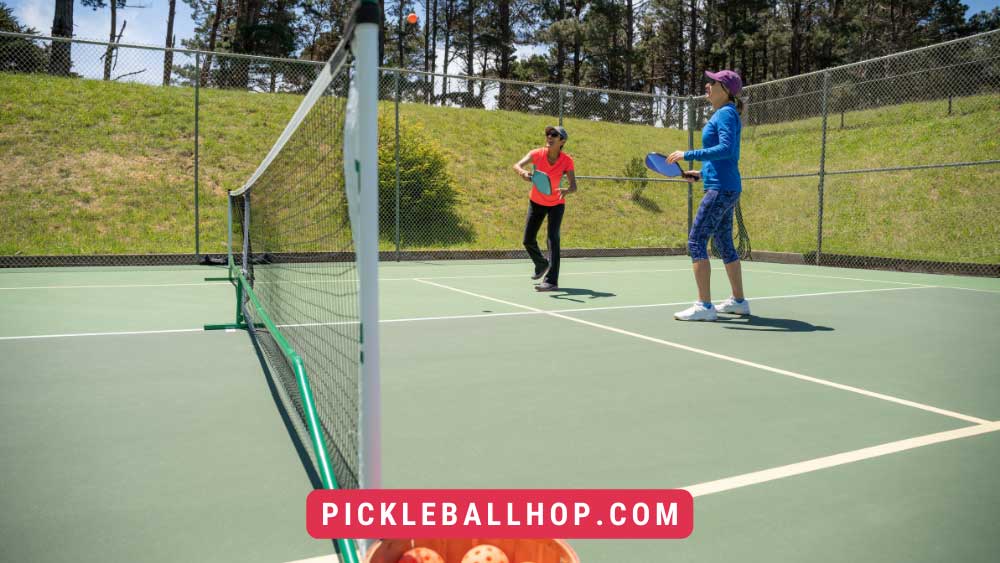 It depends on the situation and context of the rally as to where you place your pickleball volleys. You can use these guidelines to determine where to aim your volleys.
It depends on the situation and context of the rally as to where you place your pickleball volleys. You can use these guidelines to determine where to aim your volleys.
- Your volley should be hit at the opponent’s feet. That’s rule #1. Volleys hit low at one’s feet are the most difficult to return.
- Make contact with your opponent’s hip or shoulder with your volley. If your opponent is at their own non-volley line, they will most likely default to a backhand ready position, which leaves the paddle-side hip or shoulder vulnerable to an attacking volley.
- If there is an opening or gap between you and your opponent, hit your volley there.
- When your opponents are “stuck” in their own backcourt, hit your volley deep to pin them to the baseline. Despite this fact, keep in mind that your opponent may quickly make a move forward and, as a result, the volley that would have been delivered deep if your opponent had stayed back will now be delivered chest high and vulnerable to counterattack.
- Whenever your opponent hits a hard ball at you or if you simply want to “reset” a point, hit your volley in such a way that it “drops” gently and harmlessly over the net.
You may enjoy reading Pickleball Stacking
Pickleball volleyball types
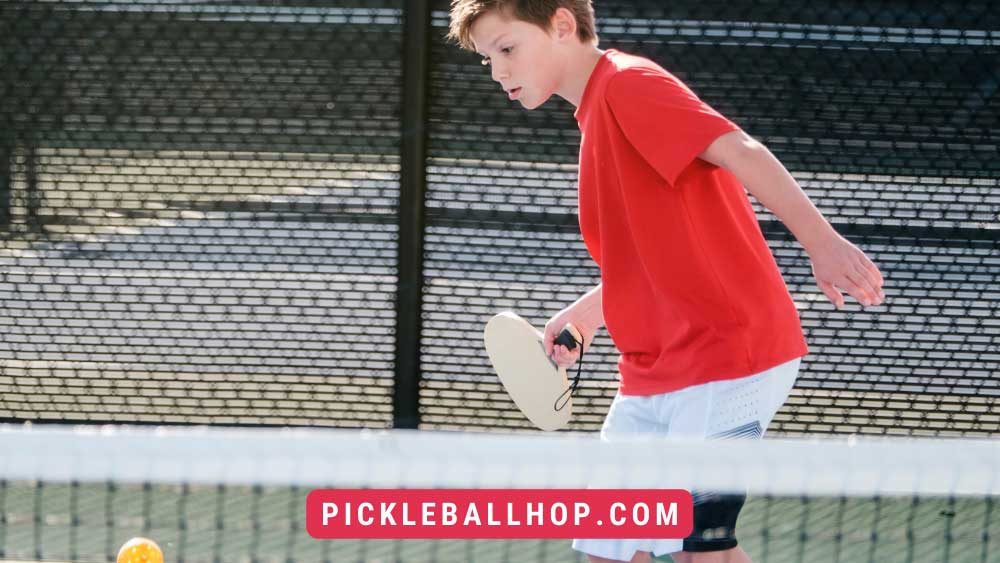 The different placement strategies for the volley result in different types of volleys that are more effective than others within the context of these different strategies. It is not necessary to implement the same type of volley in every situation. Volleys are executed based on factors such as court positioning, ball height, and objective.
The different placement strategies for the volley result in different types of volleys that are more effective than others within the context of these different strategies. It is not necessary to implement the same type of volley in every situation. Volleys are executed based on factors such as court positioning, ball height, and objective.
As a general rule, pickleball volleys can be divided into three types:
- Punch Volleys
- Roll volleyballs (topspin volleyballs)
- Drop volleyballs (Block volleyballs)
- Dink Volleys
1. Punch Volleys
Most volleys are punch volleys. When hitting a punch volley, the paddle face should be parallel to the court, perhaps slightly open, and hit with a forward “punching” motion. With this type of shot, your arm is extended forward from your elbow, creating a hinge effect. Punch volleys, or any other volley for that matter, should be performed with a firm wrist and a calm body.
Punch volleys are great options when the ball is at medium height (not too low or too high) and you are hitting them at your opponent’s feet or into a gap.
You may enjoy reading How To Build An Outdoor Pickleball Court
2. Roll Volleys
When you are in your opponents’ backcourt and your contact point would be below the net height, you are most likely to execute roll volleys successfully. Drop shots, or third shots, are frequently attempted by your opponents. In order to keep your opponent pinned to the baseline, roll volleys are the most effective shot selection when you have a low-to-high swing path.
3. Drop Volleys
In addition to its more common names, drop volley and block volley, the drop volley has other names as well. When your opponents are hitting the ball at you, dropping a volley is the most effective way to “reset” the point with a soft landing. When playing drop volleys, you should use a soft grip and be able to “absorb” the pace of the ball.
4. Dink Volley / Volley Dink
An opponent’s non-volley zone is simply the zone between your non-volley line and their non-volley zone when you volley a dink shot into it. A block, push, or lift is used to catch the ball before it bounces. If you take out your opponent’s dink shot, you will avoid having to retreat from the non-volley line, and your opponent will have less time to react and prepare for you.
Low Balls: A Note
When the opponent is staying back and attempting a drop shot, we can use the roll volley on a low ball. However, what if you drop the ball while your opponent is up and at the non-volley line? You should open your paddle face slightly in this situation and not punch hard. Rather than volleying quickly, try slowing down your pace so that your ball lands close to your opponent. Attempting to punch that low volley could result in your opponent easily abusing it if you hit it too high.
Final Thoughts
In order to play winning pickleball, it is imperative you know how to execute the different types of volleys. Every volley type should be in your toolbox. To master it, you must practice. As well as play. Practice makes perfect. Come play with us!
You may enjoy reading Why Is It Called Pickleball?

